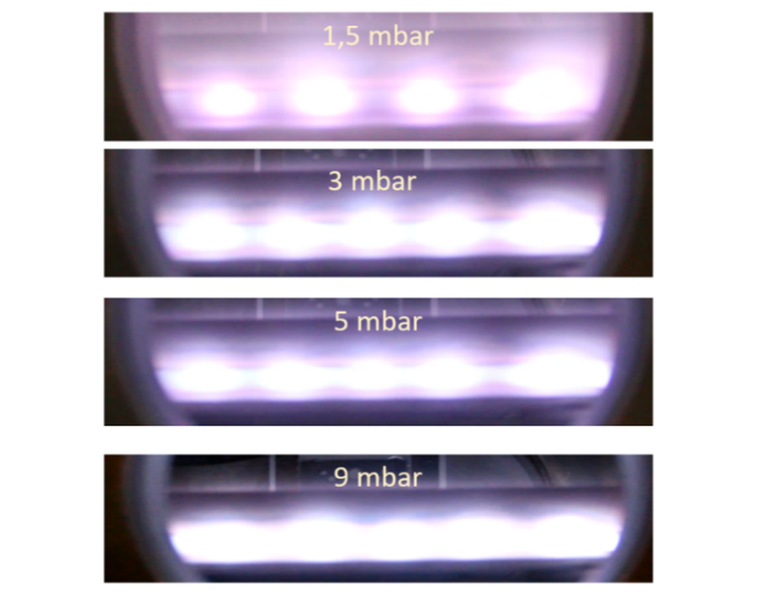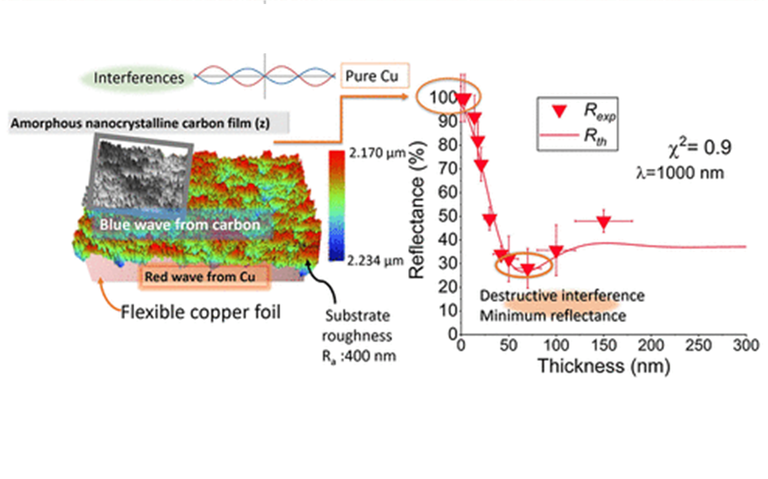Energy source for high-energy additive manufacturing
Contact: Tiberiu Minea
Energy management is a priority these days. The same applies to additive manufacturing (AM), which is seen as an integral part of the 4th industrial revolution. The Investissements d'Avenir programme has supported this area of research since 2015 and continues to do so.
Our laboratory has invested heavily in research into high-energy AF, particularly processes based on metal powder beds and focusing on ceramics. At Plateau de Saclay level, the LPGP is a partner in the Strategic Research Initiative (SRI) Paris-Saclay Additive Manufacturing (FAPS). At national level, the laboratory is involved in the HEAD Scientific Interest Group (GIS) for "High Energy in Additive Manufacturing", led by the CNRS, and above all in the "Energy Sources" working group, which it leads alongside the PIMM. We are also involved in the AMLA research group.
It has been shown that the amount of energy applied to the material determines the quality of the solid resulting from the fusion of the powders, as well as the efficiency of the FA process. Precise adjustment and shaping of the beam are the prerequisites for achieving a stable melting regime, with little material loss (evaporation), good volume melting (absence of porosities), and a reduced level of residual stress.
The research activities carried out in the laboratory concern the two energy sources currently used:
- electrons
and
- laser
The problems associated with the use of electron beams in AF are numerous and range from 3D simulation of the beam to electron-matter interaction, or from beam shaping to transverse energy characterisation. Particular attention has been paid to modelling electron emission - also known as field-assisted thermionic emission [REF 1]. It should be noted that almost all the electron guns used in AF produce the electron beam by vacuum thermo-emission. The specificity of this beam compared to others of the same type (e.g. SEM - Scanning Electron Microscopy, TEM - Transmission Electron Microscopy) consists of an extreme charge density, as the current can reach 100 mA (1000 to 100,000 times greater than that used for SEM or TEM, respectively) for an acceleration voltage of around 50 kV and a focal spot of the order of 100 µm in diameter. This corresponds to a current density of 1 kA/cm2! For this reason, space charge effects are very important, and it is difficult to focus such beams.
The self-coherent simulation of such a beam over longitudinal dimensions of the order of 1 m is a challenge. The electrostatic effect of the relativistic electrons making up the beam must be taken into account, and the problem must be dealt with in all three spatial dimensions - a condition imposed by the complex configurations of the focusing, deflection and correction (astigmatism) coils.
Beam characterisation is also problematic because of the high beam current. However, we have successfully set up a means of measuring and reconstructing the complete profile of the beam as it interacts with the surface.
A serious limitation of electron-beam FA processes is the upwelling of powders in the gun, which is induced by Coulombic repulsion between the powder grains (~50 µm in size) if the beam charge is not effectively evacuated towards the mass (the so-called "smokes" effect). For this purpose, we proposed the use of a linear radio-frequency discharge with a special configuration, shown in Figure 1 [REF 2 - 4].

Figure 1 - Images of a linear radiofrequency plasma produced in Ar at different pressures to neutralise and preheat the metal powder before melting [REF 2].
Finally, the deposition of energy by energetic electrons in solid matter has been modelled for both electron beams and laser beams.
For the laser source, particular attention has been paid to the absorption of energy by super-reflective materials such as Cu, Ag, Au, etc. Several methods have been proposed to achieve this, and the results are summarised below. Several methods have been proposed to achieve this, the most effective of which exploits surface coating with an ultra-thin layer (25 to 50 nm) of carbon. Absorption at 1 µm drops from 99% to around 30% (Figure 2 - [REF 5]).
For more details, see the "deposition of ultra-thin layers and nanoparticles" section.

Figure 2: Example of destructive interference using a carbon layer of around 50 nm on a copper surface with a roughness of several µm. Conformal deposition was achieved by DC magnetron. [REF 5]
[REF 1] B. Seznec, T. Minea, Ph. Testé, Ph. Dessainte, G. Maynard
Theoretical Treatment of Electron Emission and Related Phenomena- ISBN: 978-3-030-98418-2/485780_1, Springer-Nature, 2022
[REF 2] S. Alhomsi, G. Bauville, S. Pasquiers, T.Minea
Experimental and numerical study of a novel configuration of Radio-Frequency Capacitive Coupled Plasma
2021 J. Appl. Phys. 130, 123302 (2021); doi: 10.1063/5.0060781
[REF 3] T. Minea, G. Walrand, G. Bauville, S. Pasquiers -
Dispositif de chauffage pour appareil de fabrication additive
Heating Device For Additive Manufacturing Apparatus
France application, FR 18/53017 filled 06 April 2018 ; Published FR3079773A1·2019-10-11
PCT/FR2019/050808 filled 05.04.2019 – delivered 18.03.2022 FR3079773
issue 10 October 2019 WO 2019193298 A1
[REF 4] T. Minea, G. Walrand, C. Ballage, D. Ludin, T. Petty
Dispositif de chauffage a confinement magnétique pour appareil de fabrication additive sélective
Magnetic Confinement Heating Device For Selective Additive Manufacturing Apparatus
France application, FR 18/53031 filled 06 April 2018 ; Published FR3079775A1·2019-10-11
PCT International Application n° PCT/FR2019/050809 filled 05 April 2019 – delivered 26.11.2021 FR3079775; issue 10 October 2019 WO 2019193299 A1
[REF 5] A. Crespi, Ch. Ballage, M-C Hugon, D. Lundin, T. Minea
The role of amorphous nanocrystalline carbon film in the light interference of flexible copper foils
ACS Appl. Electron. Mater., 4, (2) (2022) 576–584, https://doi.org/10.1021/acsaelm.1c00520
